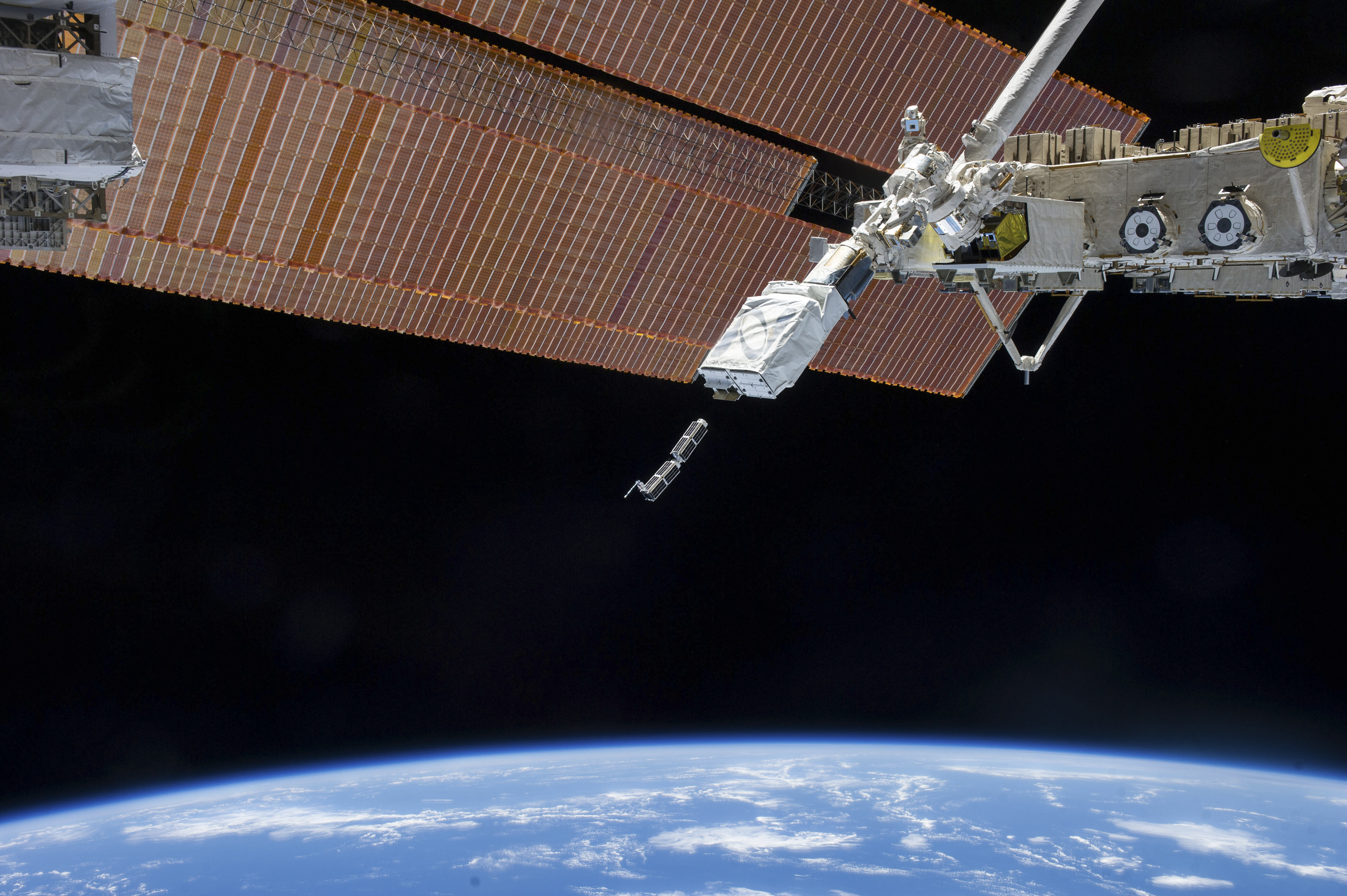The rise of nanosatellites
Big things sometime come in small packages


America's space program might seem stagnant — after all, NASA retired the Space Shuttle program back in 2011 and still doesn't have a replacement to send U.S. astronauts to the International Space Station and bring them back home. But America's private space industry is booming.
Private spaceflight companies are making incredible progress. Just witness the recent highly publicized launch and synchronized dual booster landing of SpaceX's Falcon Heavy rocket, which is now the largest operational rocket in the world. But it's not all about size. There's also been a flurry of activity with very small satellites.
Thousands of artificial satellites orbit the Earth. Many are tiny. One common type of small satellite, called a CubeSat, is often about the size of a loaf of bread and weighs just a few pounds. These satellites are easy to manufacture with off-the-shelf components. Check out this helpful infographic from Space.com:
The Week
Escape your echo chamber. Get the facts behind the news, plus analysis from multiple perspectives.

Sign up for The Week's Free Newsletters
From our morning news briefing to a weekly Good News Newsletter, get the best of The Week delivered directly to your inbox.
From our morning news briefing to a weekly Good News Newsletter, get the best of The Week delivered directly to your inbox.
(Courtesy of Space.com)
There are a lot of unique missions that you are able to achieve with CubeSats that you're not able to achieve with bigger satellites," said Mike Safyan of Planet, one of the companies on the forefront of the satellite revolution. For instance, the company's Dove constellation, with around 200 satellites in orbit, captures images of the Earth every day at a resolution of 3 to 5 meters per pixel. This allows for stunningly sharp and detailed images of our planet.
Such a satellite constellation, or a network of satellites that operates as a single entity, allows individual satellites within the constellation to work in concert, and therefore be much, much smaller. And because weight is the most important (and most expensive) aspect of launching an object into space, these satellites can escape Earth relatively inexpensively.
Imagine what people could do with the sort of data Planet's Dove constellation is capturing. Farmers could monitor crops over a growing season. Scientists concerned about climate change could monitor receding glaciers over days, weeks, months, and years. Indeed, Planet's data is already being used by first responders in natural disasters; from images of Hurricane Maria to floods in Argentina, the organization makes its data available for free to volunteers and humanitarian organizations to aid in disaster relief. Having this kind of data available at our fingertips can and will change the way we look at, analyze, and explore our planet.
A free daily email with the biggest news stories of the day – and the best features from TheWeek.com
But it's not just imaging. Small satellites have an incredible number of other uses, largely in telecommunication. Perhaps that's why one of the biggest names in private spaceflight is getting into the small satellite game. SpaceX, founded by Elon Musk back in 2002, plans to use small satellites to blanket the globe in fast and inexpensive satellite internet.
Right now, satellite internet is expensive and frequently unreliable. But the technology holds a lot of promise. After all, investing in ground infrastructure is expensive, and it's a commitment that many companies don't want to make, especially in poorer and rural areas. Access to fast, inexpensive, and reliable satellite internet could fill in these gaps around the world. "This system, if successful, would provide people in low to moderate population density areas around the world with affordable, high-speed internet access, including many that have never had internet access," a SpaceX spokesperson told The Week.
To accomplish this goal, SpaceX plans to launch 4,425 satellites into low Earth orbit and 7,518 satellites into very low Earth orbit, according to a filing with the FCC. The sheer number of small satellites are necessary to ensure global coverage. It would be possible to launch fewer larger satellites to achieve a similar effect, but these would have to be deployed into geostationary Earth orbit, which is farther away than SpaceX plans to deploy its satellite constellations. The advantage to SpaceX's plan is that its satellites' relative closeness to Earth will ensure that the system has low latency (in other words, high bandwidth processing with minimal delays).
These are but a couple examples. But the overall trend is clear: When it comes to small satellites, the possibilities are endless, and more and more companies are expressing interest in launching them. These little machines have a bright future ahead of them, and we're just beginning to figure out what these satellites are capable of.
Swapna Krishna is a space, science, and tech reporter. She's a contributing writer at Engadget and her work has been published at Gizmodo, Newsweek Magazine, Fast Company, and more. She lives outside Philadelphia.
-
 ‘Capitalism: A Global History’ by Sven Beckert and ‘American Canto’ by Olivia Nuzzi
‘Capitalism: A Global History’ by Sven Beckert and ‘American Canto’ by Olivia NuzziFeature A consummate history of capitalism and a memoir from the journalist who fell in love with RFK Jr.
-
 Who will the new limits on student loans affect?
Who will the new limits on student loans affect?The Explainer The Trump administration is imposing new limits for federal student loans starting on July 1, 2026
-
 Why does Susie Wiles have MAGA-land in a panic?
Why does Susie Wiles have MAGA-land in a panic?TODAY’S BIG QUESTION Trump’s all-powerful gatekeeper is at the center of a MAGA firestorm that could shift the trajectory of the administration

